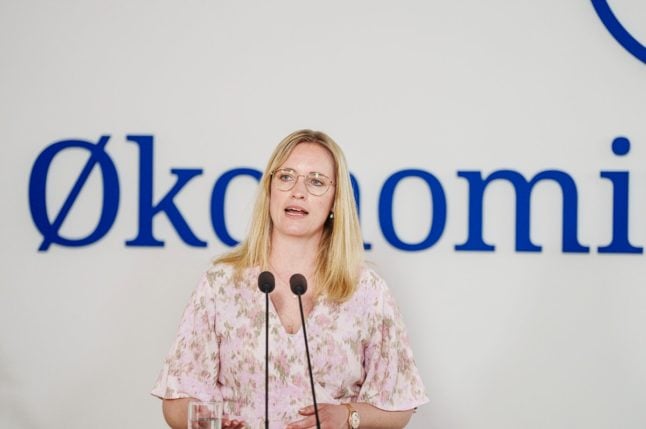A latest inflation index which takes into account EU consumer prices was released by national agency Statistics Denmark on Tuesday.
The index shows a fall in the inflation level from 9.6 percent in December to 8.4 percent in January.
Although inflation is falling, it remains at a high level seen in a historical context.
Meanwhile, the measure of “core inflation” or kerneinflation continues to be a warning light for Danish consumers.
Core inflation is the inflation of prices excluding food and energy prices and is sometimes used by economists as a measure of how entrenched inflation has become in other areas of the economy. It fell marginally from 7.4 percent in December to 7.3 percent in January.
Because core inflation is steady while the overall, energy-driven inflation rate has started declining, end prices for consumers could remain high in the shorter term, even if energy bills are lower than they were in 2022.
READ ALSO: Why prices in Denmark could still increase despite falling inflation
“High core inflation shows that a broad cross section of Danish consumption is affected by price increases,” private economist with Arbejdernes Landsbank, Brian Friis Helmer, told news wire Ritzau in a comment.
Overall inflation for the EU was 10 percent in January according to the latest data, which confirm preliminary figures released earlier this month.
The EU figure is also slightly down month-on-month.
Inflation should continue to fall in coming months, Helmer predicted.
“Electricity and gas prices have fallen markedly since the crazy heights of late last summer and Danes’ budgets are therefore not as badly hit on that front,” he said.
“At the same time, global food and raw material prices and transport costs have fallen, and that can reduce the price burden on Danes,” he said.
“Inflation is a measure of the prices today compared to a year ago. Therefore, the steep price increases from last year will begin to fall away from inflation calculations as we progress through the year,” he also said.




 Please whitelist us to continue reading.
Please whitelist us to continue reading.
Member comments